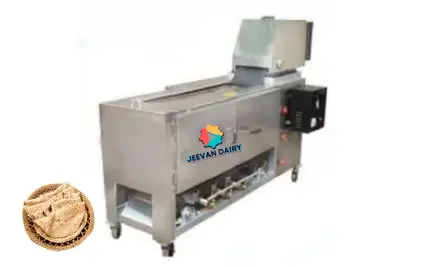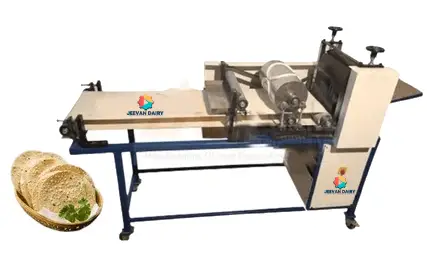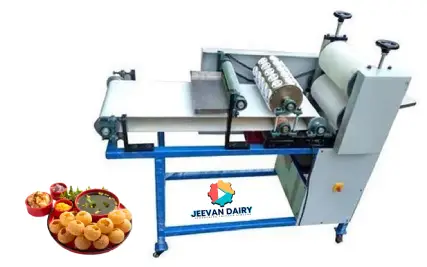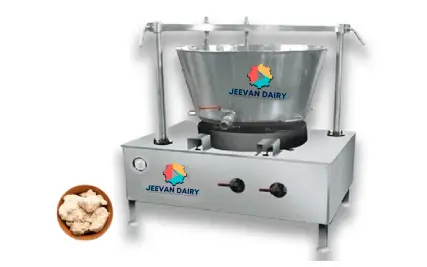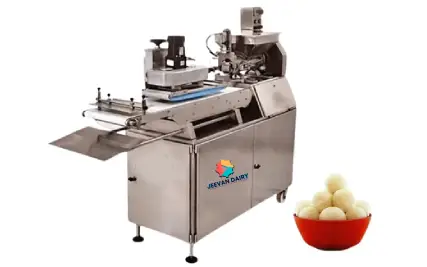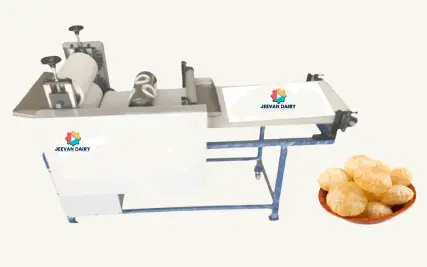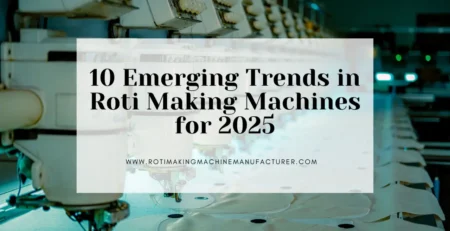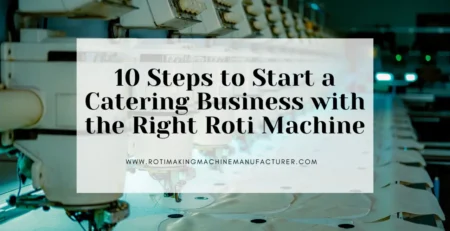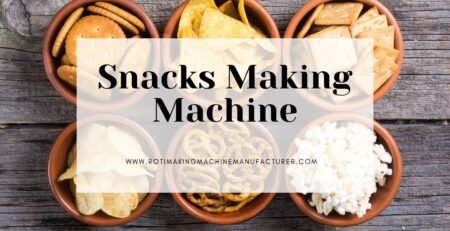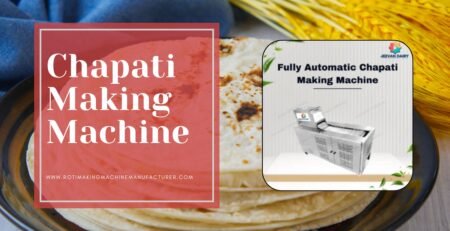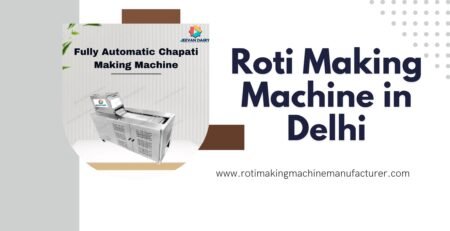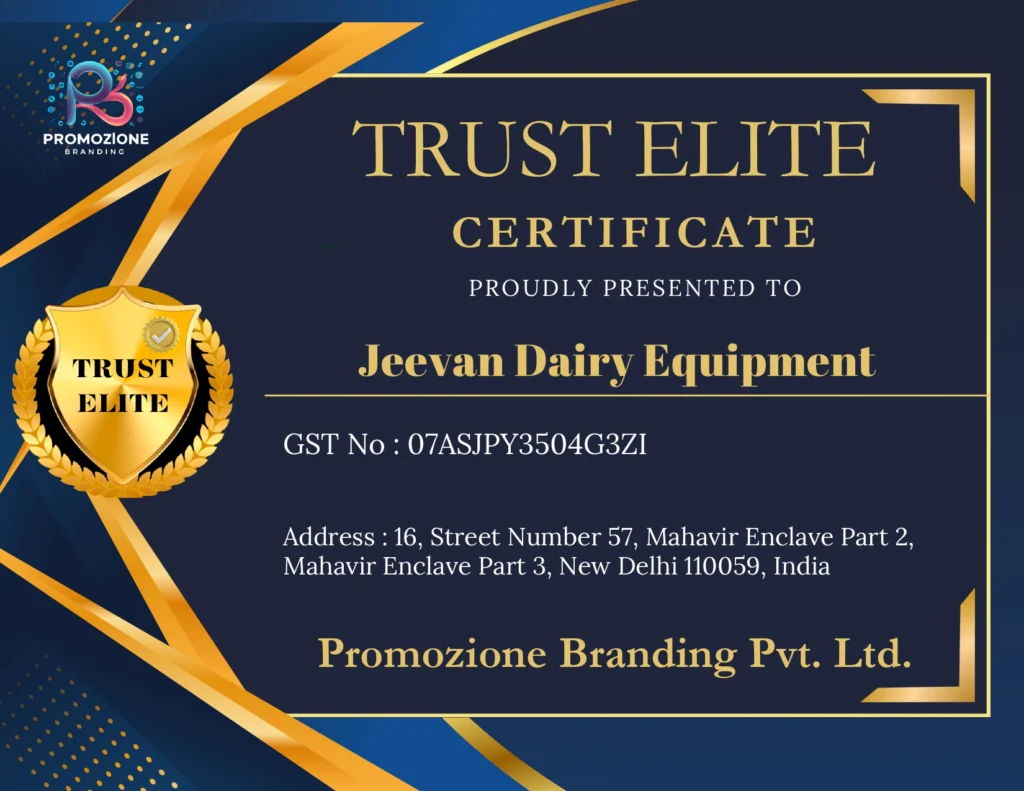How Automation is Revolutionizing Roti Production
Introduction
Roti is a cornerstone of Indian cuisine, yet traditional roti preparation is labor-intensive and time-consuming. For centuries, households, restaurants, and small-scale food businesses relied on skilled hands to knead dough, roll flatbreads, and cook them to perfection. While this method produced delicious results, it was limited in scale, consistency, and efficiency.
With the surge in demand for packaged foods, ready-to-eat products, and large-scale catering services, the traditional manual process became a bottleneck. Enter automation in roti production. Modern roti-making machines streamline every step—from kneading dough to rolling, cooking, and packaging—without compromising taste or quality.
As a leading Roti Making Machine Manufacturer, Jeevan Dairy Industry has been instrumental in helping food businesses scale their operations. Automated systems now allow restaurants, caterers, cloud kitchens, and packaged food brands to produce rotis efficiently, maintain uniform quality, and meet increasing market demand.
This comprehensive guide explores how automation is revolutionizing roti production, the benefits it offers, and why businesses should adopt advanced roti-making machinery.
1. Traditional Roti Production Challenges
Manual roti production, while authentic, comes with several limitations:
- Labor-intensive and Time-consuming: Preparing rotis manually requires skilled labor. A cook can only make a limited number of rotis per hour, making it challenging to scale operations.
- Inconsistent Quality: Thickness, size, and cooking levels vary between batches, affecting taste and customer satisfaction.
- Hygiene Concerns: Manual handling increases the risk of contamination, especially in large-scale operations.
- Limited Scalability: Meeting high demand for restaurants, caterers, or packaged food is nearly impossible with manual preparation alone.
These challenges made it clear that the industry needed an efficient, scalable, and hygienic solution—paving the way for automation.
2. Overview of Automation in Roti Production
Automated roti-making systems integrate several processes into one streamlined workflow:
- Dough Kneading: Machines ensure uniform consistency and optimal moisture content.
- Sheeting and Rolling: Automated rollers flatten the dough to a precise thickness.
- Cooking: Rotis are cooked on temperature-controlled surfaces for uniform results.
- Packaging (optional): Some machines integrate with automated packaging lines for ready-to-eat rotis.
Modern systems can be modular, allowing businesses to expand capacity, or full-line, integrating all stages into a continuous automated process.
Automation ensures efficiency, consistency, and hygiene, addressing the limitations of traditional methods.
3. Increased Production Capacity
Automated machines drastically increase output. While a skilled cook can prepare 200–300 rotis per hour, automated systems can produce 1,000–5,000 rotis per hour, depending on configuration.
Case Study:
A mid-sized catering company in Delhi upgraded to automated roti machines from Jeevan Dairy Industry. Production rose from 500 rotis per hour to over 3,000, enabling expansion into packaged retail distribution.
Benefit: Businesses can meet higher demand without proportional labor increases.
4. Consistency and Quality Control
Automation ensures uniform rotis every time:
- Consistent thickness, diameter, and weight
- Even cooking on all sides
- Reduced variation between batches
Example:
A ready-to-eat roti brand supplying supermarkets relied on automated machines to maintain identical rotis nationwide, building customer trust and reducing complaints.
Benefit: Reliable quality improves brand reputation and customer satisfaction.
5. Labor Savings and Workforce Optimization
Manual roti preparation requires skilled workers, which are costly and difficult to retain. Automation reduces dependency on skilled labor, reallocating staff to other operations:
- Dough handling is automated
- Rolling and cooking require minimal supervision
- Training costs are significantly reduced
Case Study:
A restaurant chain replaced multiple staff managing roti preparation with automated machines, reallocating employees to customer service and quality control.
Benefit: Reduced labor costs and optimized workforce allocation.
6. Hygiene and Safety Improvements
Automated systems minimize human contact, reducing contamination risk. Features enhancing hygiene include:
- Stainless steel construction
- Enclosed cooking areas
- Easy-to-clean surfaces
- Compliance with food safety standards
Example:
A frozen roti manufacturer implemented automated machines with fully enclosed cooking and packaging. This reduced contamination risk and met international hygiene certifications.
Benefit: Safer production for both staff and consumers.
7. Energy and Cost Efficiency
Modern roti machines are energy-efficient, reduce dough wastage, and minimize cooking time:
- Automatic portion control reduces overuse of ingredients
- Consistent cooking prevents wastage from undercooked or burnt rotis
- Faster production lowers operational costs
Case Study:
A large-scale frozen roti manufacturer reported a 25% reduction in energy consumption and 30% lower ingredient wastage after adopting automated machines.
Benefit: Lower operational costs and higher profitability.
8. Scalability and Modular Expansion
Automation allows businesses to scale easily. Modular machines can be added to meet growing demand, and full-line systems can integrate multiple processes:
- Restaurants and cloud kitchens can expand capacity without major renovation
- Packaged roti brands can increase production for new distribution areas
Example:
A cloud kitchen expanded from a single outlet to multiple cities using modular automated roti machines, ensuring consistent product quality across locations.
Benefit: Flexible growth without disruption.
9. Product Innovation with Automation
Automated machines enable experimentation with new products:
- Multigrain, whole wheat, and specialty dough
- Stuffed rotis and parathas
- Uniform thickness and sealed stuffing for frozen products
Example:
A ready-to-eat frozen food company developed stuffed rotis with consistent size and sealing, impossible to achieve manually at scale.
Benefit: Product diversification and innovation at high volume.
10. Integration with Modern Food Processing Lines
Automated roti machines can integrate seamlessly with:
- Conveyor belts
- Cooling and storage systems
- Packaging lines
Example:
Frozen roti manufacturers connect machines directly to packaging units, reducing manual handling, contamination risk, and production time.
Benefit: Streamlined workflow from raw dough to packaged product.
11. Future Trends in Automated Roti Production
The future points to smart, AI-enabled automation:
- IoT monitoring for predictive maintenance
- AI for quality control and defect detection
- Energy-efficient cooking systems
- Customizable dough settings for specialty products
As consumer demand grows and food industries become competitive, automation will be essential for efficiency, quality, and innovation.
Conclusion
Automation is transforming roti production by increasing capacity, ensuring consistency, reducing labor dependency, improving hygiene, and enabling product innovation. Businesses adopting automated roti-making machines from trusted Roti Making Machine Manufacturers like Jeevan Dairy Industry can:
- Scale operations efficiently
- Maintain uniform quality
- Reduce operational costs
- Ensure hygiene and safety
- Innovate with specialty rotis
Whether you run a restaurant, cloud kitchen, or packaged roti business, investing in automated roti production is the key to staying competitive and future-ready.

